Madagascar: All You know to know about the 4th Largest island in the world
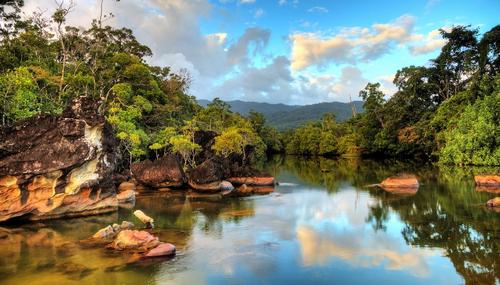
Masoala National Park Credit: Dennis van de Water/Shutterstock Encompassing several hundred miles of rainforest, the national park also includes three marine parks. These marine parks protect coral reefs and house over 3,000 fish species, plus you’ll likely find humpback whales in Antongil Bay during the breeding season.
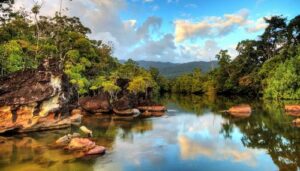
Credit: Dennis van de Water/Shutterstock
Encompassing several hundred miles of rainforest, the national park also includes three marine parks. These marine parks protect coral reefs and house over 3,000 fish species, plus you’ll likely find humpback whales in Antongil Bay during the breeding season.
Country Profile
Official Name:
Repoblikan’i Madagasikara
Republique de Madagascar
short form: Madagascar
int’l long form: Republic of Madagascar
former: Malagasy Republic
ISO Country Code: mg, MDG
Time:
Local Time = East African Time (UTC +3h)
Actual Time: Sat-Aug-21 14:48
Country Calling Code: +261
Capital City: Antananarivo (Tananarive)
Other Cities:
Antsirabé (about 500,000), Mahajanga (about 400,000), Toamasina (about 450,000)
Type: Republic
Independence: 26 June 1960 (from France)
Constitution: 19 August 1992 by national referendum
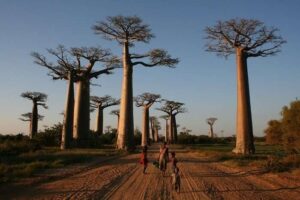
In the western side of Madagascar stands these tall Baobab trees symmetrically lined up on a dirt road lying between Morondava and Belon’i Tsiribihina. Its unusual and raw beauty draws the attention of many tourists and makes it one of the best places to visit in Madagascar. The Baobab trees are locally known as Renala which means, ‘Queens of the forest’. These 30 meters tall strangely shaped trees have existed since 1000 years, and the view of these trees during the sunset is worth to capture.
Geography:
Location: Southern Africa, an island in the Indian Ocean, east of Mozambique.
Area: 587,040 km² (226,658 sq mil.) about the size of Texas or France.
Terrain: Mountainous central plateau, coastal plain.
Climate: tropical along coast, temperate inland, arid in south, periodic cyclones. Dry season from April to October, rainy season from November to March.
People:
Nationality: Malagasy
Population: 28 million (est. 2021)
Ethnic Groups: 18 separate tribal groups of mixed Malay-Indonesian (Merina and Betsileo) and mixed African, Malay-Indonesian and Arab descent (Cotiers) – Betsimisaraka, Tsimihety, Antaisaka, Sakalava and people with traces of French, Indian, Creole and Comorian origin.
Religions: Indigenous beliefs 52%, Christian 41%, Muslim 7%.
Languages: Malagasy (of Malayo-Polynesian origin) and French (both official), English.
Literacy: 75%
Natural resources: Graphite, chromite, coal, bauxite, salt, quartz, tar sands, semiprecious stones, mica minerals, fish and hydropower.
Agriculture products: Coffee, vanilla, sugarcane, cloves, cocoa, rice, cassava (tapioca), beans, bananas, peanuts; livestock products.
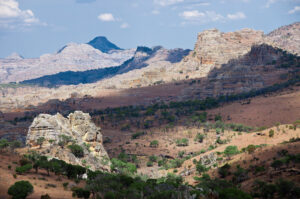
Isalo National Park
Source: flicker/ marches-lointaines.com
The Isalo National Park is notable for is varied terrain. Located in the central southern region of Madagascar, the park includes areas of grassland, steep canyons and sandstone formations, all dotted by occasional pools lined by palm trees. As in many of the country’s national parks, guides are required. Tours can be arranged to last as short as several hours or as long as several days.
Industries: Meat processing, soap, breweries, tanneries, sugar, textiles, glassware, cement, automobile assembly plant, paper, petroleum, tourism.
Exports – commodities: coffee, vanilla, shellfish, sugar, cotton cloth, clothing, chromite and petroleum products.
Exports – partners: United States 19%, France 18%, United Arab Emirates 7%, China 6%, Japan 6%, Germany 5%, India 5% (2019)
Imports – commodities: capital goods, petroleum, consumer goods, food
Imports – partners: China 24%, France 11%, United Arab Emirates 9%, India 7%, South Africa 5% (2019)
Currency: Ariary and Malagasy Franc (FMG)
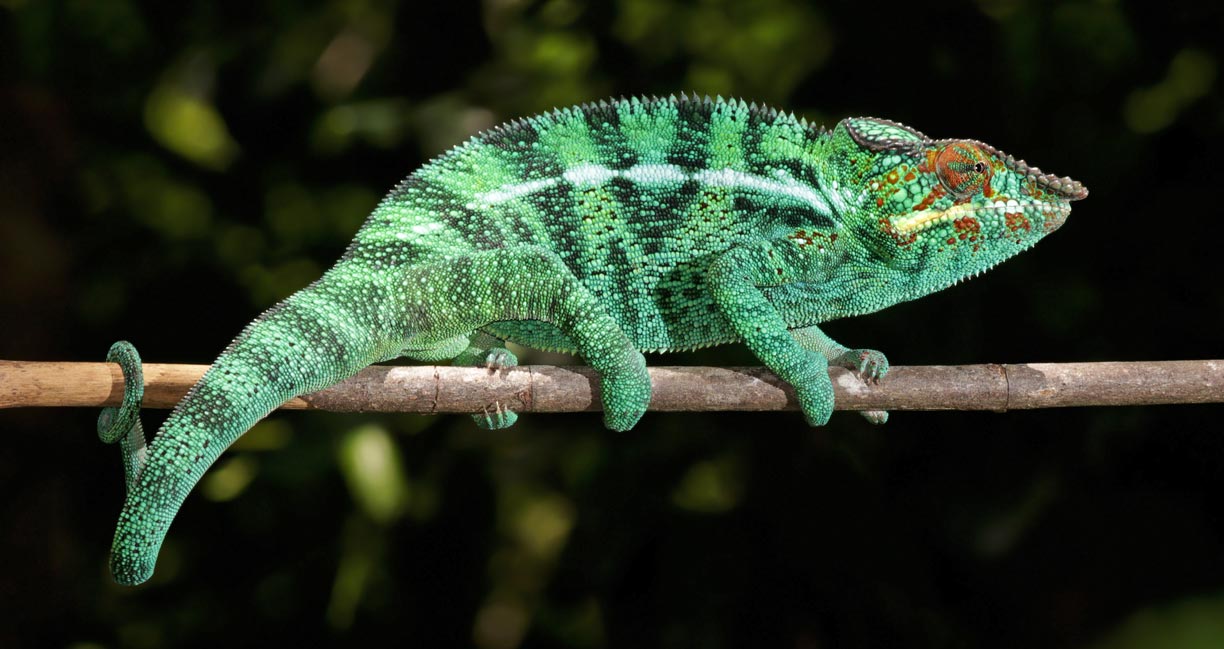
The oldest island on the planet
Madagascar is possibly the oldest island on the planet since the break up of Gondwana continent.
A unique fauna and flora
The island is best known for its unique fauna and flora; it is populated by lemurs, fossas, Malagasy civets, chameleons, frogs, and weird aye-ayes.
Humpback whales
In its coastal waters, the island is a breeding and calving ground for humpback whales.
The elephant bird
Madagascar was home to the elephant bird, an extinct flightless creature; the Vorombe titan was the largest known bird in the world, with height up to 3m and weight up to 700kg.
Baobabs and traveler’s palms
Probably the most famous plants of Madagascar are the iconic baobabs (Adansonia grandidieri) and the traveler’s palm (Ravenala madagascariensis), a national landmark. The Allée des Baobabs, the dirt road lined with baobab trees, is probably the most photographed attraction in the country.
Rice
The chief food crop of Madagascar is rice.
Vanilla
About half of the world’s production of vanilla comes from Madagascar.
The Settlement of Madagascar
The settlement of Madagascar is one of the most unusual and least understood episodes in human prehistory. Madagascar was settled about 1200 years ago by a very small group of women (about 30), most of whom were of Maritime Southeast Asian descent (about 93%). [The Royal Society]
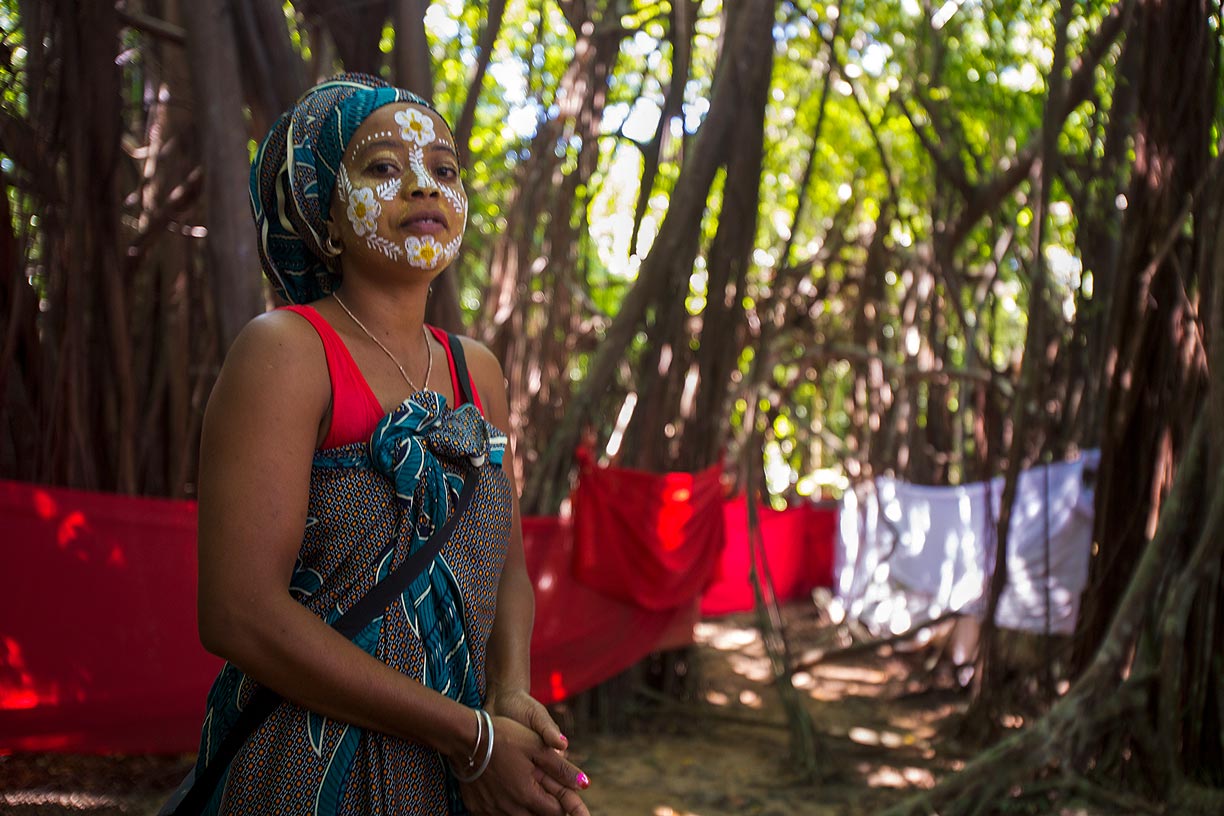
Even though 85% of Malagasy are Christians by name, ancestor worship (famadihana), folk beliefs and taboos (fady) are deeply rooted in society.
Image: Steve Evans
Queen Ranavalona I
Madagascar’s Queen Ranavalona I (reigned 1828-61) was dubbed the “Mad Queen” by British colonial powers for taking drastic measures to expand her empire while protecting Malagasy sovereignty from the aggressive advance of European influence, including that of British Protestant missionaries.
Face painting
Masonjoany is the application of sandalwood paste to the face, full face or in floral patterns, or both.
Lamba
Lambas are the traditional, woven garments of rectangular length (like a scarf or a sash) worn by both men and women.
Zanahary
In traditional beliefs, Zanahary is the creator god and supreme deity of the Malagasy pantheon. The god includes female and male aspects and manifests in both heavenly and earthly forms.
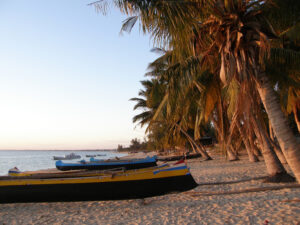
Fady
The daily life of the Malagasy people is dominated by thousands of cultural taboos (fady). Fady are (mainly superstitious) taboos, rules or behaviors that apply to a wide range of situations, people, places, or colors. To break a taboo, ritual negotiations with the ancestors would be necessary.
Famadihana
Famadihana is a family celebration of a special kind. An important part of the traditional celebration is that the remains of the ancestors are taken from their burial site, wrapped in fresh cloths and participate in the festivities.
Aloalo
The aloalo is the Malagasy version of a tombstone, a pole sculpture placed on the graves of important people in the southwestern region of Madagascar.
Salegy
Salegy is the popular contemporary music from Madagascar.
Moraingy
Moraingy is Madagascar’s combat sport, also known as Malagasy bare-knuckle boxing.
Libertalia and Antsiranana Bay
The Antsiranana Bay was used for shelter by a number of pirates and privateers during the Golden Age of Piracy. It was possibly the location of the legendary pirate colony Libertalia.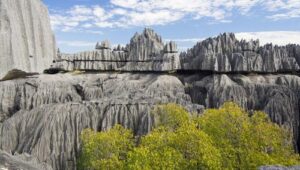
Tsingy de Bemaraha National Park
Credit: Pierre-Yves Babelon/Shuttersto
Tsingy de Bemaraha National Park“Tsingy” means where one cannot walk barefoot, which is a perfect name for this national park. Tsingy de Bemaraha National Park is essentially a big forest of jagged limestone stone spires that jut out of the ground like needles . It is believed these dramatic, UNESCO-designated monoliths date back to around five million years ago. Don’t worry about your feet, though, there are platforms build throughout the park so you can admire these natural formations up close.
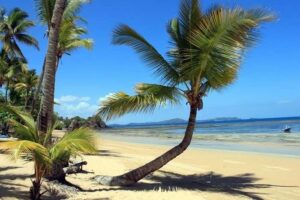
Image Credit: Marco Assini by Flick
Nosy Be
According to Wikipedia, As a result of the island’s long isolation from neighboring continents, Madagascar is home to various plants and animals found nowhere else on Earth. Approximately 90% of all plant and animal species found in Madagascar are endemic.This distinctive ecology has led some ecologists to refer to Madagascar as the “eighth continent”, and the island has been classified by Conservation International as a biodiversity hotspot.Madagascar is classed as one of 17 megadiverse countries. The country is home to seven terrestrial ecoregions: Madagascar lowland forests, Madagascar subhumid forests, Madagascar dry deciduous forests, Madagascar ericoid thickets, Madagascar spiny thickets, Madagascar succulent woodlands, and Madagascar mangroves.
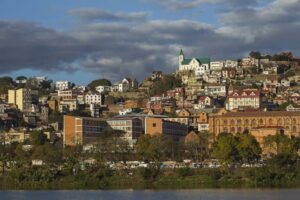
Reflecting a beautiful blend of traditions and culture, this capital city is the melting pot of Madagascar. Also called Tana it is settled at the slopes of the surrounding mountains, this city is situated at an altitude of 1400 metres. The older part of the city still showcases the French colonialism and Parisian structures lined on the slopes of the hills. As compared to the rest of the Madagascar island, Antananarivo is one of the developed cities.
More than 80 percent of Madagascar’s 14,883 plant species are found nowhere else in the world, including five plant families.The family Didiereaceae, composed of four genera and 11 species, is limited to the spiny forests of southwestern Madagascar.Four-fifths of the world’s Pachypodium species are endemic to the island. Three-fourths of Madagascar’s 860 orchid species are found here alone, as are six of the world’s nine baobab species.The island is home to around 170 palm species, three times as many as on all of mainland Africa; 165 of them are endemic.Many native plant species are used as herbal remedies for a variety of afflictions. The drugs vinblastine and vincristine are vinca alkaloids,used to treat Hodgkin’s disease, leukemia,and other cancers, were derived from the Madagascar periwinkle. The traveler’s palm, known locally as ravinala and endemic to the eastern rain forests, is highly iconic of Madagascar and is featured in the national emblem as well as the Air Madagascar logo.
Like its flora, Madagascar’s fauna is diverse and exhibits a high rate of endemism. Lemurs have been characterized as “Madagascar’s flagship mammal species” by Conservation International. In the absence of monkeys and other competitors, these primates have adapted to a wide range of habitats and diversified into numerous species. As of 2012, there were officially 103 species and subspecies of lemur, 39 of which were described by zoologists between 2000 and 2008.They are almost all classified as rare, vulnerable, or endangered. At least 17 species of lemur have become extinct since humans arrived on Madagascar, all of which were larger than the surviving lemur species.
A number of other mammals, including the cat-like fossa, are endemic to Madagascar. Over 300 species of birds have been recorded on the island, of which over 60 percent (including four families and 42 genera) are endemic.The few families and genera of reptile that have reached Madagascar have diversified into more than 260 species, with over 90 percent of these being endemic(including one endemic family).The island is home to two-thirds of the world’s chameleon species, including the smallest known, and researchers have proposed that Madagascar may be the origin of all chameleons.
Endemic fish of Madagascar include two families, 15 genera and over 100 species, primarily inhabiting the island’s freshwater lakes and rivers. Although invertebrates remain poorly studied in Madagascar, researchers have found high rates of endemism among the known species. All 651 species of terrestrial snail are endemic, as are a majority of the island’s butterflies, scarab beetles, lacewings, spiders, and dragonflies.
In 2007 six of the national parks were declared a joint World Heritage Site under the name Rainforests of the Atsinanana. These parks are Marojejy, Masoala, Ranomafana, Zahamena, Andohahela and Andringitra.
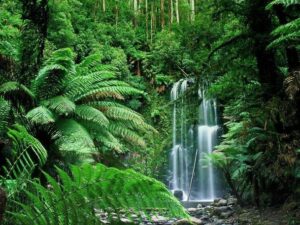
Source:zahamenatropicalrainforest
Zahamena National Park
Draped in rainclouds and mist, clad in rolling canopies of emerald green, and hidden between the rising peaks on Madagascar’s eastern edge, the famous jewel of the rainforests of the Atsinanana comes in the form of the Zahamena National Park.
One of the hardest protected areas in the country to get to, this area of just over 400 square kilometers is home to one of the most eclectic arrays of bird life.
Yep, red owls and serpent eagles cruise through the waxy boughs and fern forests, meeting the white-eyed indri indri, dwarf lemurs and other curious simian life
Madagascar is subdivided into 22 regions (faritra).The regions are further subdivided into 119 districts, 1,579 communes, and 17,485 fokontany.
Madagascar’s natural resources include a variety of agricultural and mineral products. Agriculture (including the growing of raffia), mining, fishing and forestry are mainstays of the economy. In 2017 the top exports were vanilla (US$894M), nickel metal (US$414M), cloves (US$288M), knitted sweaters (US$184M) and cobalt (US$143M).
Madagascar is the world’s principal supplier of vanilla, cloves and ylang-ylang.The island supplies 80% of the world’s natural vanilla.Other key agricultural resources include coffee, lychees and shrimp. Key mineral resources include various types of precious and semi-precious stones, and it currently provides half of the world’s supply of sapphires, which were discovered near Ilakaka in the late 1990s.
Madagascar has one of the world’s largest reserves of ilmenite (titanium ore), as well as important reserves of chromite, coal, iron, cobalt, copper and nickel. Several major projects are underway in the mining, oil and gas sectors that are anticipated to give a significant boost to the Malagasy economy. These include such projects as ilmenite and zircon mining from heavy mineral sands near Tôlanaro by Rio Tinto, extraction of nickel by the Ambatovy mine near Moramanga and its processing near Toamasina by Sherritt International,and the development of the giant onshore heavy oil deposits at Tsimiroro and Bemolanga by Madagascar Oil.
Culture
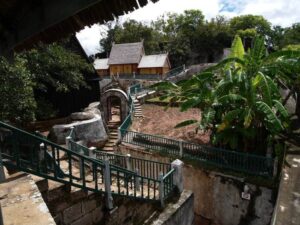
Ambohimanga Source: unesco
Ambohimanga is a place deeply entwined with Malagasy national identity.
Also called, simply, Royal Hill, it was the onetime home of the local kings.
Expanded and added to throughout the 1800s, the mound of palaces and burial grounds, crumbling fortifications and regal tombs, was the kingpin of one of Madagascar’s four quadrants, and the place from which King Andrianampoinimerina launched his now-famed campaigns to re-unify Imerina following more than seven decades of civil war in the 18th century.
Although social castes are no longer legally recognized, ancestral caste affiliation often continues to affect social status, economic opportunity, and roles within the community. Malagasy people traditionally consult Mpanandro (“Makers of the Days”) to identify the most auspicious days for important events such as weddings or famadihana, according to a traditional astrological system introduced by Arabs. Similarly, the nobles of many Malagasy communities in the pre-colonial period would commonly employ advisers known as the ombiasy (from olona-be-hasina, “man of much virtue”) of the southeastern Antemoro ethnic group, who trace their ancestry back to early Arab settlers.(Wikipidia)
The diverse origins of Malagasy culture are evident in its tangible expressions. The most emblematic instrument of Madagascar, the valiha, is a bamboo tube zither carried to Madagascar by early settlers from southern Borneo, and is very similar in form to those found in Indonesia and the Philippines today.
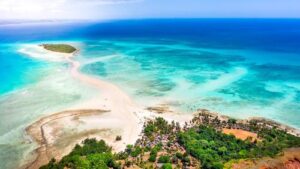
Traditional houses in Madagascar are likewise similar to those of southern Borneo in terms of symbolism and construction, featuring a rectangular layout with a peaked roof and central support pillar. Reflecting a widespread veneration of the ancestors, tombs are culturally significant in many regions and tend to be built of more durable material, typically stone, and display more elaborate decoration than the houses of the living.The production and weaving of silk can be traced back to the island’s earliest settlers, and Madagascar’s national dress, the woven lamba, has evolved into a varied and refined art.
The Southeast Asian cultural influence is also evident in Malagasy cuisine, in which rice is consumed at every meal, typically accompanied by one of a variety of flavorful vegetable or meat dishes.bAfrican influence is reflected in the sacred importance of zebu cattle and their embodiment of their owner’s wealth, traditions originating on the African mainland. Cattle rustling, originally a rite of passage for young men in the plains areas of Madagascar where the largest herds of cattle are kept, has become a dangerous and sometimes deadly criminal enterprise as herdsmen in the southwest attempt to defend their cattle with traditional spears against increasingly armed professional rustlers.(Wikipidia)
Cuisine
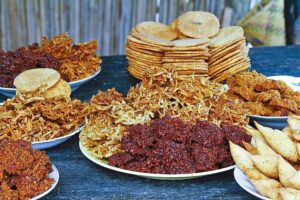
Traditional Malagasy dishes. Image credit: Damian Ryszawy/Shutterstock.com
The Malagasy cuisine is based on rice as a staple of the diet and is consumed with nearly every meal. Rice is served with different types of accompaniments called kabaka which might have beans, beef, chicken or fish. A broth prepared using green leafy vegetables called romazava is also often served with rice. The side dishes are either in the fried, boiled, grilled or cooked form. Tomato-based sauces in the highlands and coconut milk in the coastal areas are added to the cooked side dishes to enhance the flavor of the dish. Other additives that are used to add flavor to the kabaka are ginger, cloves, turmeric, vanilla, garlic, onions, and salt. A variety of condiments are also used to add flavor according to an individual’s taste buds and are added during a meal rather than while cooking it. These include sakay (made of chilly peppers) and tangy or sweet fruit pickles. In the arid areas of Madagascar, zebu is reared by the people and zebu milk is often added to vegetable dishes. Sweet potato, cassava, maize, millet, yams are the most important types of foods consumed in these arid regions. The different ethnic groups living in Madagascar have their own food taboos which are either observed at all times or during special circumstances like pregnancy or lactation.
Malagasy cuisine reflects the diverse influences of Southeast Asian, African, Indian, Chinese, and European culinary traditions. The complexity of Malagasy meals can range from the simple, traditional preparations introduced by the earliest settlers, to the refined festival dishes prepared for the island’s 19th-century monarchs. Throughout almost the entire island, the contemporary cuisine of Madagascar typically consists of a base of rice (vary) served with an accompaniment (laoka). The many varieties of laoka may be vegetarian or include animal proteins, and typically feature a sauce flavored with such ingredients as ginger, onion, garlic, tomato, vanilla, coconut milk, salt, curry powder, green peppercorns or, less commonly, other spices or herbs. In parts of the arid south and west, pastoral families may replace rice with maize, cassava, or curds made from fermented zebu milk. A wide variety of sweet and savory fritters as well as other street foods are available across the island, as are diverse tropical and temperate-climate fruits. Locally produced beverages include fruit juices, coffee, herbal teas and teas, and alcoholic drinks such as rum, wine, and beer. Three Horses Beer is the most popular beer on the island and is considered emblematic of Madagascar.
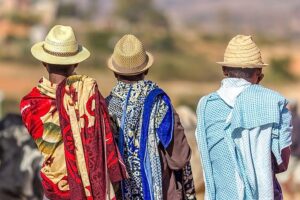
Malagasy men in their traditional attire. Image credit: Davideandolfi/Shutterstock.com
Dressing styles vary in different regions of Madagascar. A large section of the country’s urban population follows the western style of dressing. In the highland areas, rural areas, and remote places of the country, traditional dresses are still worn. Both men and women wear a lamba, a traditional wrap that is worn around the waist. Women often wear a matching shawl over the head and shoulders. In the highland regions, both men and women adorn a white wrap on their shoulders above their garment. Various styles of straw hats are worn in the country that helps protect the wearers from the strong rays of the sun.
Sources: Wikipedia, Nationonline, Britannica, https://www.google.com/amp/s/www.worldatlas.com/amp/articles/the-culture-of-madagascar.html,
https://www.thecrazytourist.com/15-best-places-visit-madagascar/,
https://www.touropia.com/tourist-attractions-in-madagascar/,
https://www.nomadicmatt.com/travel-blogs/top-things-to-see-madagascar/,
https://www.google.com/amp/s/traveltriangle.com/blog/places-to-visit-in-madagascar/amp/,
https://www.thediscoverer.com/blog/10-stunning-places-in-madagascar/XvHyVpKgiwAG5avl
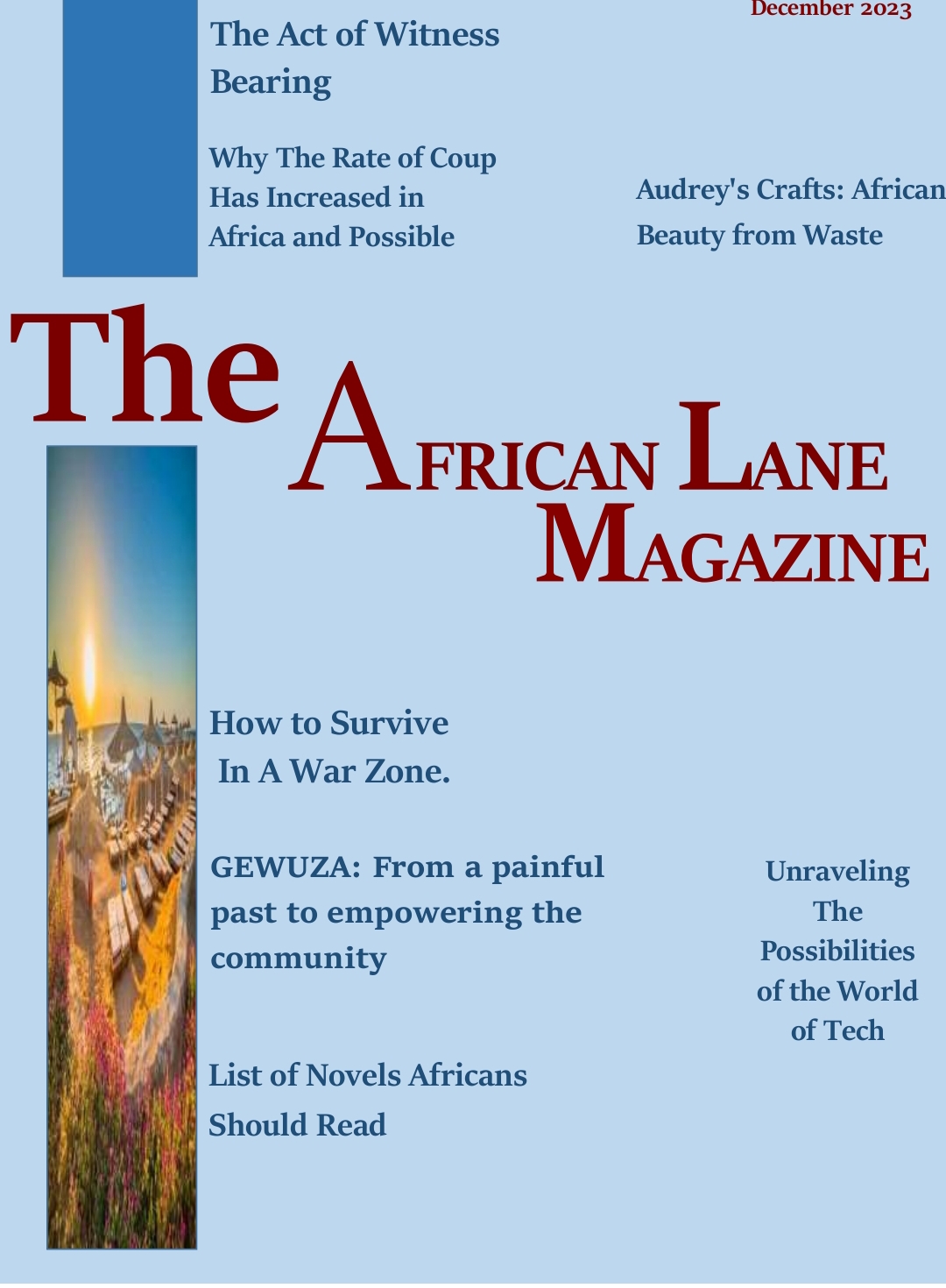
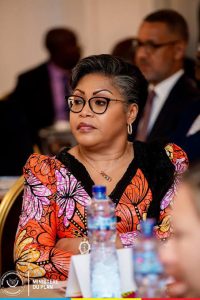
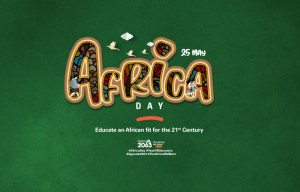
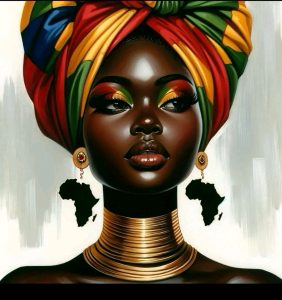
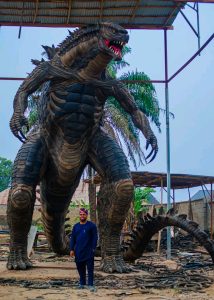

you have an incredible weblog here! would you like to make some invite posts on my blog?
I抳e recently started a web site, the information you offer on this site has helped me tremendously. Thanks for all of your time & work.
you might have an amazing blog right here! would you like to make some invite posts on my blog?
Sure!! Send us an email @theafricanlane@gmail.com
It抯 exhausting to find educated individuals on this matter, however you sound like you recognize what you抮e speaking about! Thanks
I enjoy you because of each of your labor on this web page. Ellie loves doing internet research and it’s really easy to see why. My partner and i know all regarding the lively way you provide invaluable tips by means of the blog and improve response from some others on that topic so my child is truly learning a great deal. Take advantage of the rest of the year. You are carrying out a useful job.
A formidable share, I simply given this onto a colleague who was doing a little evaluation on this. And he in truth bought me breakfast because I found it for him.. smile. So let me reword that: Thnx for the deal with! However yeah Thnkx for spending the time to debate this, I feel strongly about it and love reading more on this topic. If potential, as you develop into experience, would you thoughts updating your blog with more particulars? It is highly useful for me. Large thumb up for this weblog publish!